Introducing solid foods to your baby is an exciting milestone, but it also comes with the responsibility of monitoring for potential food allergies. Food allergies can develop at any age, and being aware of the signs can help you identify and manage them early. Here’s how you can check if your baby has food allergies and what to do if you suspect a reaction.
What Are Food Allergies?
A food allergy occurs when a baby’s immune system mistakenly identifies a particular food as harmful, triggering an allergic reaction. This can range from mild symptoms to severe reactions like anaphylaxis. The most common food allergens include:
-
Cow’s milk
-
Eggs
-
Peanuts
-
Tree nuts (such as almonds, cashews, and walnuts)
-
Soy
-
Wheat
-
Fish
-
Shellfish
Signs of a Food Allergy in Babies
Reactions can appear within minutes to a few hours after consuming the allergenic food. Common signs include:
-
Skin reactions: Hives, redness, rash, or eczema flare-ups
-
Digestive issues: Vomiting, diarrhea, stomach pain, or excessive gas
-
Respiratory symptoms: Sneezing, coughing, wheezing, or nasal congestion
-
Swelling: Particularly around the face, lips, eyes, or tongue
-
Irritability: Excessive fussiness, crying, or discomfort after eating
-
Severe reactions (anaphylaxis): Difficulty breathing, swelling of the throat, or loss of consciousness (requires immediate emergency care)
How to Introduce Allergens Safely
To check for food allergies safely, follow these guidelines:
-
Start with single-ingredient foods: Introduce one new food at a time, waiting at least 3–5 days before adding another. This helps identify any allergic reactions.
-
Begin with small amounts: Offer a tiny portion of the new food and monitor for reactions.
-
Introduce allergens early: Current guidelines suggest introducing common allergens (like peanuts and eggs) around 6 months of age to help reduce the risk of allergies.
-
Avoid risky situations: Don’t introduce allergens when your baby is sick or already fussy, as symptoms may be harder to interpret.
What to Do If Your Baby Has an Allergic Reaction
-
Mild symptoms (rash, mild stomach upset): Stop offering the suspected food and consult your pediatrician
-
Moderate symptoms (vomiting, swelling, wheezing): Contact your doctor immediately for guidance
-
Severe reactions (difficulty breathing, anaphylaxis): Call emergency services and use an epinephrine auto-injector if prescribed
When to See a Doctor
If you suspect your baby has a food allergy, consult a pediatrician or allergist for proper testing. They may recommend:
-
Skin prick tests to check for allergic reactions to specific foods
-
Blood tests to measure allergen-specific antibodies
-
Supervised food challenges to confirm allergies in a controlled setting
While food allergies can be concerning, early detection and management can help keep your baby safe. By introducing new foods carefully, observing reactions, and seeking medical advice when needed, you can confidently navigate your baby’s dietary journey. If your child has been diagnosed with food allergies, working with a healthcare provider to create a management plan is key to ensuring their health and well-being.











How to Check If Your Baby Has Food Allergies